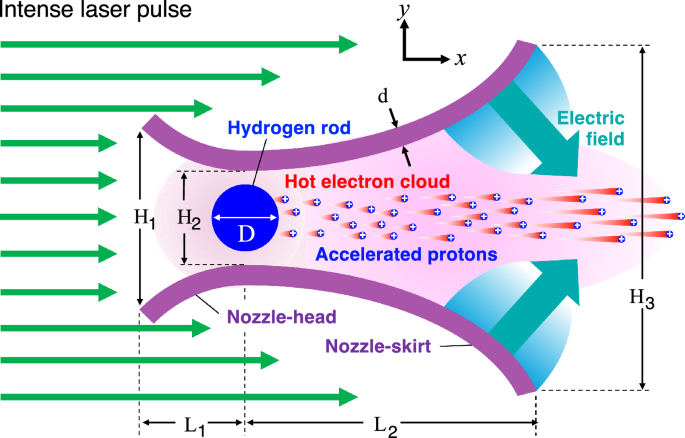Micronozzle Accelerator: Unveiling the Physics of GeV Proton Acceleration

This research utilizes 2D particle-in-cell simulations to reveal a novel proton acceleration mechanism called the Micronozzle Accelerator (MNA). MNA focuses laser energy onto a hydrogen rod using a micronozzle, generating strong electric fields that accelerate protons to GeV energies. The study found that the MNA proton acceleration process consists of three stages: run-up, main-drive, and afterburner. The afterburner stage, a key feature of MNA, enables continued proton acceleration even after laser irradiation ceases, attributed to the effective transfer of thermal energy from hot electrons to protons during plasma free expansion. The research also explores the effects of laser intensity and pulse width on proton acceleration and compares MNA's performance with traditional targets, showing higher energy conversion efficiency and lower angular divergence.